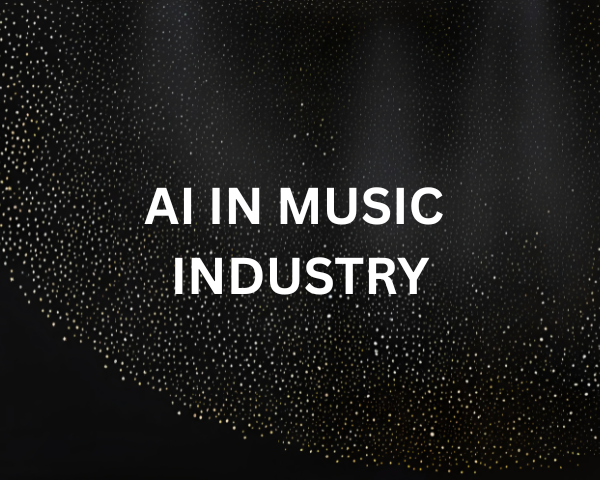AI (Artificial Intelligence) in music sounds interesting in itself. AI technologies have revolutionized how artists produce music tracks for their projects.
In fact, according to a report by Statista, interest in AI-enhanced music significantly varies across generations in the United States. Further, the data reveals that Gen Z (18-24 years old) and Millennials (25-35 years old) show the highest interest in AI-generated music.
Many artists are incorporating AI into their workflow to enhance productivity. Among many, the stem splitter has emerged as one of the most popular in music production tools.
Genuinely engrossed with AI technology, it powers artists to split various stems from the music to later use in their projects as they want.
Imagine you can extract drums, bass, acoustic guitar, vocals, and instrumentals from music at the click of a button, to captivate your music production journey.
But how are these technologies able to extract such stems accurately? This article will explain how AI-based stem splitter tools work.
What Is AI-Powered Stem Splitter?
As much as I am aware of AI technology, the AI-based stem splitters explicitly extract stem components such as guitar, piano, drum, strings, etc, from the music in a matter of seconds.
To understand it deeply, I did a primitive test by using the best ai music generator to generate different types of music samples to test it on stem splitter applications.
As a result, I noticed that AI stem splitters employ advanced signal processing techniques through deep learning models that analyze the frequency spectrum and temporal patterns of an audio file to identify and separate distinct sound sources.
Features Of Stem Splitter Tool
- Separates audio into distinct stems.
- Upload and process multiple audio files at once.
- Uses machine learning models to accurately isolate elements.
- Cloud-based processing enables stem splitting without hardware demands.
Let’s dig into the details to uncover technologies associated in extracting streams.
Technologies Behind AI Tools That Separates Stem
There is a mix of several technologies, models, and frameworks behind a successful stem splitter application. A reliable steam extractor incorporates the following technological fundamentals.
1. Deep Learning
At its core, AI tools use deep learning to recognize patterns in frequencies and analyze elements like vocals, drums, or bass. Either there may be supervised learning, unsupervised learning, or a combination of both models used.
2. Architectures & Models
When patterns are identified, architecture and models are used for source separation. U-Net, Open-Unmix, and Demucs are popular deep extractors with a higher accuracy rate.
- U-Net: It is based on TensorFlow, an encoder-decoder CNN designed to capture both global and local audio features.
- Open-Unmix: It is a PyTorch-based model that performs separation with dense neural networks.
- Demucs: Leveraged by Meta used for retaining the temporal integrity of stems.
3. Libraries & Tools
The libraries and tools are used to build and run AI stem splitters. And most stem separation tools are built on powerful AI and audio libraries. Librosa, SciPy, FFmpeg, and Soundfile, to name a few.
4. Training Datasets
Datasets act as a bridge because they help AI technologies produce better results. Remember a high-quality datasets with isolated stems are essential. This is also used in the fine-tuning of the stem splitter application.
For example, A graph comparing Source-to-Distortion Ratio (SDR) across various stem types for leading AI-based stem separation models. It’s based on benchmarked results from MUSDB18 and the MDX’23 Challenge.
What Are The Applications Of Stem Splitters?
The use cases of stem splitter tools are not limited to the music production industry. Though it is extensively used for sampling, educational purposes, and audio restoration.
- Remixing and Production: Indeed, these tools are a marvel for use cases like remixing and producing very own music for a personal project. It helps the artists to isolate specific elements to create remixes or new arrangements.
- Sampling: This is also facilitating sample production to test variation through particular instruments or vocals for use in new compositions.
- Educational Purposes: Stem Splitter helps beginners to learn about stems and other components of a track. Analyze individual components of a track for learning and teaching.
Conclusion
There is no doubt in saying that AI-powered stem splitters are helpful and productive in music generation. These apps eliminated the long process for manual extraction, which can now be done in seconds, thanks to AI-based technology.
So, if you are a beginner or professional in the music industry, stem splitter is a convenient tool for practice. Just to care that you have the right to use the separated components, especially for commercial purposes.
Frequently Asked Questions
How does AI separate stems from a music track?
Imagine you’re using the stem splitter app. Its AI will analyze the frequency patterns and time-based features of audio using deep learning models. By learning how different instruments and vocals behave in the spectral domain, these models can extract vocals and instrumentals with higher accuracy.
Who can benefit from using a stem splitter?
Both beginners and professionals in the music industry can benefit. More likely for student learning instrumentation, a DJ remixing tracks, or a filmmaker isolating vocals for sync licensing.
Can I use the separated stems for commercial projects?
It is important to note that you must have an appropriate license or own the rights to the original music for commercial uses. Many stem splitters provide technical capabilities, but copyright laws still apply when reusing or distributing extracted elements.
Is the internet required to use the stem splitter tools?
Most modern stem splitters are cloud-based, and therefore, to run smoothly, you must have an internet connection to upload tracks and download the separated stems. However, some open-source or offline versions do exist, but may require technical knowledge.
